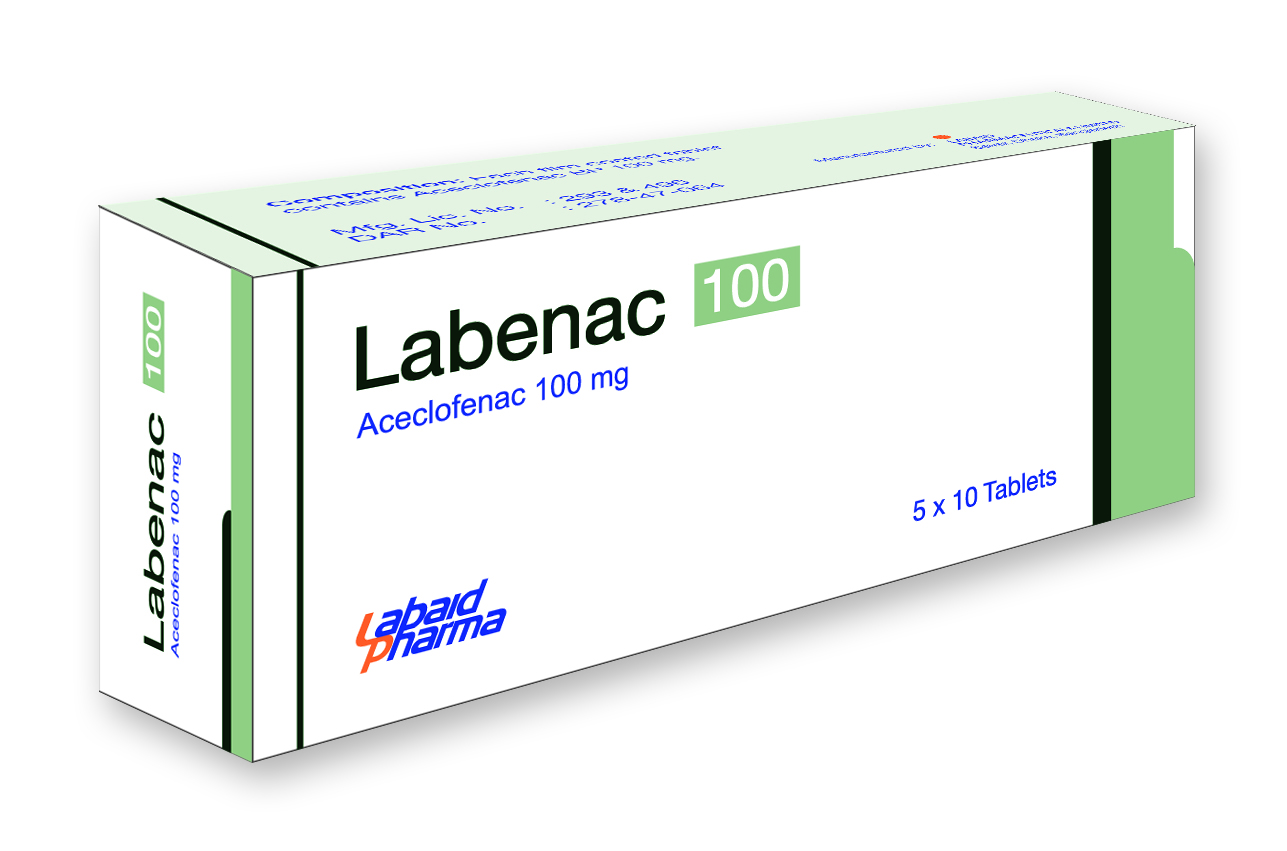Labenac 100 Tablet

Generic : Aceclofenac BP 100 mg
Therapeutic : Aceclofenac BP 100 mg
Description:
Aceclofenac is a non-steroidal anti-inflammatory drug. Its mode of action is largely based on inhibition of prostaglandin synthesis. Aceclofenac is a potent inhibitor of the enzyme cyclooxygenase, which is involved in the production of prostaglandins. It also stimulates cartilage matrix (glycosaminoglycans) synthesis.
Indications:
Labenac 100 is indicated for the relief of pain and inflammation in both acute and chronic pain like osteoarthritis, rheumatoid arthritis, ankylosing spondylitis, dental pain, post-traumatic pain, low back pain, gynaecological pain etc.
Dosage and Administration:
Adults: The maximum recommended dose is 200 mg daily, taken as two separate 100 mg doses, one tablet in the morning and one in the evening.
Children: There is no clinical data on the use of Aceclofenac in children.
Elderly: The pharmacokinetics of Aceclofenac are not altered in elderly patients, therefore it is not considered necessary to modify the dose and dose frequency.
Renal insufficiency: There is no evidence that the dosage of Aceclofenac needs to be modified in patients with mild renal impairment.
Hepatic insufficiency: The dose of Aceclofenac should be reduced in patients with hepatic impairment. An initial daily dose of 100 mg should be administered.
Side Effects:
Generally Aceclofenac is well tolerated. The majority of side effects observed have been reversible and of a minor nature and include gastrointestinal disorders (dyspepsia, abdominal pain, nausea and diarrhoea) and occasional occurrence of dizziness. Dermatological side effects include pruritus and rash. Abnormal hepatic enzyme levels and raised serum creatinine have occasionally been reported.
Use in Special Group:
Pregnancy: There is no information on the use of Aceclofenac during pregnancy. Aceclofenac should not be administered during pregnancy, unless there are compelling reasons for doing so. The lowest effective dose should be administered.
Lactation: There is no information on the secretion of Aceclofenac in breast milk. The use of Aceclofenac should therefore be avoided during lactation unless the potential benefits to the mother outweigh the possible risks to the children.
Contraindications:
Aceclofenac is contraindicated in patients previously sensitive to Aceclofenac or Aspirin or other NSAIDs. It should not be administered to patients with active or suspected peptic ulcer or gastrointestinal bleeding and moderate to severe renal impairment.
Precautions:
Aceclofenac should be administered with caution to patients with symptoms indicative of gastrointestinal disorders, with a history of peptic ulceration, ulcerative colitis, Crohn's disease, hepatic porphyria, and coagulation disorders. Patients suffering from severe hepatic impairment must be monitored.
Drug Interaction:
Lithium and Digoxin: Aceclofenac, like other NSAIDs, may increase plasma concentrations of Lithium and Digoxin.
Diuretics: Aceclofenac, like other NSAIDs, may inhibit the activity of diuretics.
Anticoagulants: Like other NSAIDs, Aceclofenac may enhance the activity of anticoagulants.
Quinolones: Convulsion may occur due to an interaction between quinolones and NSAIDs.
Other NSAIDs and steroids: Concomitant therapy with Aspirin, other NSAIDs and steroids may increase the frequency of side effects.
Storage:
Keep away from light & moisture and store below 300 C temperature. Keep out of reach of children.
Commercial Pack:
Labenac 100 Tablet: Each box contains 5 x 10 tablets in blister pack.
Download Product Manual
Back


